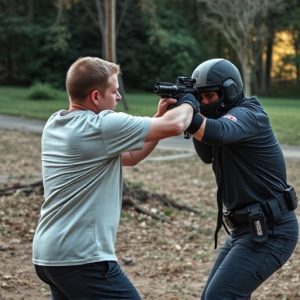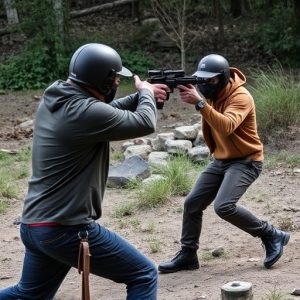Prevent Stun Gun Mishaps: LED Flashlights & Tactical Design for Safe Deployment
Tactical stun guns with LED flashlights, though perceived as non-lethal, require proper use and care…….
Tactical stun guns with LED flashlights, though perceived as non-lethal, require proper use and care for safety. Users must master technique, clean regularly, and understand advanced features like motion sensors to prevent misfire risks. Integrated LED lighting enhances low-light effectiveness, providing crucial seconds for escape or deployment. Comprehensive training on range, aiming, de-escalation, and device condition is vital for safe and effective tactical stun gun deployment, minimizing harm while maximizing protection.
In today’s world, self-defense tools like the tactical stun gun with LED flashlight have gained popularity. However, understanding stun gun misfires and their prevention is crucial for safety. This article delves into the common causes and risks of stun gun mishaps, explores how tactical design features, such as LED flashlights, enhance safety, highlights advanced misfire prevention technologies, and provides best practices for effective deployment through user training.
- Understanding Stun Gun Mishaps: Common Causes and Risks
- Tactical Design: How LED Flashlights Enhance Safety
- Advanced Features for Misfire Prevention
- Ensuring Effective Deployment: User Training and Best Practices
Understanding Stun Gun Mishaps: Common Causes and Risks

Stun guns, despite their reputation as non-lethal weapons, can sometimes misfire or malfunction, leading to potentially dangerous situations. Understanding common causes of stun gun misfires is essential for users to mitigate risks and ensure personal safety. One of the primary reasons for misfires is the improper use of the device. Tactical stun guns with LED flashlights require a firm grasp and proper targeting to administer an effective shock. Inadequate training or second-guessing technique can result in a misfire, especially under high-stress scenarios.
Another significant factor is maintaining the device. Stun guns are mechanical, and like any tool, they need regular care. Failure to clean and inspect the weapon periodically can lead to internal malfunctions, including misfires. Corrosion, worn-out parts, or damage to the electrical components increase the likelihood of a stun gun not firing when needed, which could be a critical issue during self-defense situations or law enforcement operations.
Tactical Design: How LED Flashlights Enhance Safety
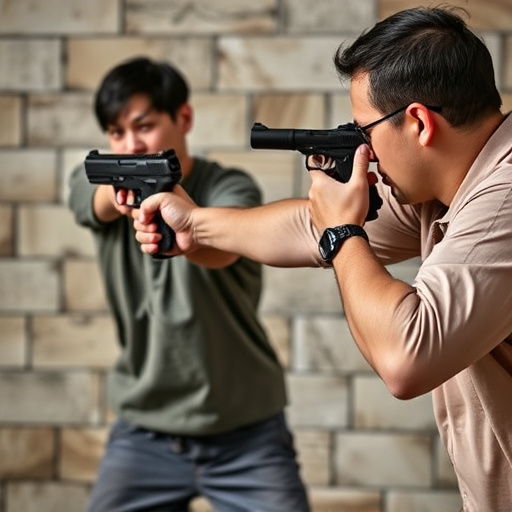
Tactical design plays a crucial role in enhancing the safety and effectiveness of a stun gun, and one notable feature is the integration of an LED flashlight. This compact yet powerful lighting tool is more than just a convenience; it serves as a critical safety net for users facing low-light or dark situations. By illuminating surroundings, the LED flashlight allows operators to assess their environment, identify potential threats, and make informed decisions before deploying the stun gun.
A tactical stun gun with an LED flashlight offers a multi-functional advantage. The bright beam can serve as a temporary blinder, temporarily disorienting an assailant, providing a split second of opportunity for the user to escape or deploy their stun device. This dual functionality ensures users are better prepared and safer during high-risk encounters, making it an essential accessory for law enforcement, security personnel, and individuals prioritizing self-defense in low-light conditions.
Advanced Features for Misfire Prevention
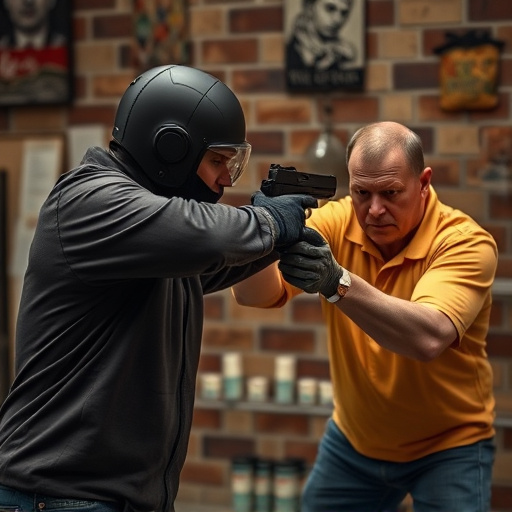
In today’s world, a tactical stun gun with LED flashlight has evolved beyond a simple self-defense tool. Advanced features now include sophisticated misfire prevention mechanisms designed to ensure safe and reliable operation. These features go beyond basic safety switches, employing cutting-edge technology to prevent accidental discharges. For instance, some models incorporate motion sensors that trigger the stun function only when the user intends to deploy it, minimizing the risk of unintended use.
Additionally, smart circuits and advanced microprocessors monitor voltage levels and current flow, automatically shutting down the device if any anomalies are detected. This ensures that even in harsh conditions or during intense physical activity, the stun gun operates securely. The tactical stun gun with LED flashlight has thus become a powerful and safe tool for personal protection, thanks to these innovative misfire prevention features.
Ensuring Effective Deployment: User Training and Best Practices
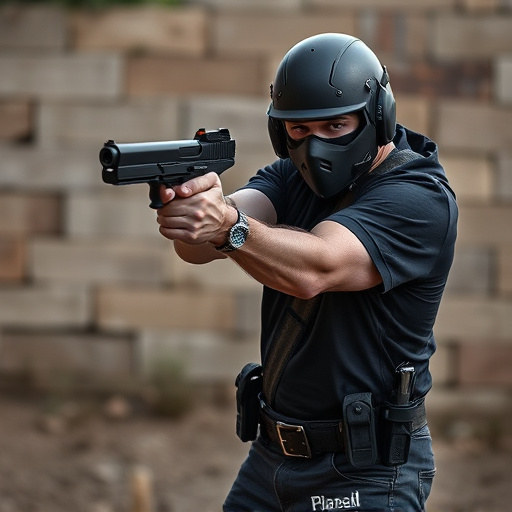
When it comes to ensuring effective deployment of a tactical stun gun with LED flashlight, proper user training is paramount. It’s not just about understanding how to activate the device; it involves mastering best practices for safe and strategic use. This includes learning appropriate range, aiming techniques, and recognizing when to deploy the stun gun versus other self-defense methods. Regular practice sessions help users gain confidence and proficiency, minimizing the risk of misfire or accidental deployment.
In addition to training, adhering to established guidelines enhances overall safety. For instance, ensuring clear lines of sight, maintaining proper grip, and keeping the device in good working condition are crucial. Users should also be educated on de-escalation techniques, as the goal is often to disable an aggressor temporarily without causing serious harm. By combining comprehensive training with best practices, individuals can maximize the effectiveness of their tactical stun gun while minimizing potential risks.
A tactical stun gun with LED flashlight is a powerful tool, but preventing misfires is paramount for user safety. By understanding common causes like mechanical failures and improper usage, and leveraging advanced features designed for misfire prevention, owners can ensure the device functions as intended in high-pressure situations. Comprehensive training and adherence to best practices are essential for effective deployment, promoting public safety and reducing risks associated with stun gun mishaps.
